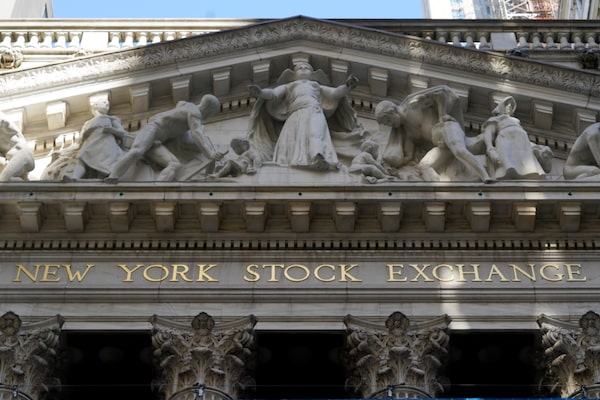
Stocks from emerging markets have struggled as the COVID-19 pandemic worsens in many countries due to the Delta variant.Richard Drew/The Associated Press
Even before Monday’s swoon – the worst day for stocks on Wall Street in a couple of months – the market was flashing concerning signals.
Chief among them were sharp moves in the bond market that indicated worsening expectations for economic growth and inflation. Critics also noticed that a dwindling number of stocks were driving the broad market’s rise toward more records.
From June 1 through July 16, the S&P 500 climbed nearly 3 per cent and set more than a dozen records along the way. But during that span, 57 per cent of stocks in the S&P 500 fell. They lost an average of roughly 7 per cent, mirroring the average gain of the stocks in the index that rose.
Strategists at Morgan Stanley call the narrowing leadership in the U.S. stock market “bad breadth,” and they say it’s a sign the market’s run is moving from the early days of its cycle to the middle.
Banks, airlines and other industries that depend on a strong economy to thrive were among the losers as doubts crept into the market that the economy could fulfill investors’ lofty predictions.
That’s in sharp contrast to the first five months of the year, when 87 per cent of stocks in the S&P 500 rallied and the index rose 11.9 per cent. It’s a concept that market watchers call “breadth,” and they say it’s a healthy sign when many stocks are lifting the market.
What’s driving the broad market higher this summer are the relatively few most influential stocks. Apple Inc., Microsoft Corp. and other Big Tech stocks all rallied powerfully through June and July, for example, in part because investors expect them to grow almost regardless of the economy’s overall strength.
Because they’re so massive, and because the S&P 500 gives more weight to movements by stocks with larger valuations, gains for these Big Tech stocks are masking weakness across much of the rest of the market.
American Airlines Inc., Delta Air Lines Inc. and United Airlines Inc. all lost at least 16 per cent from June 1 through July 16, for example, as worries mounted about slowing economic growth. But to get to the size of one Apple, you would have to combine all three airlines – and multiply that by more than 45 times. Apple stock rose 17.5 per cent from June through mid-July.
To be sure, measures of breadth in the S&P 500 are still above their average levels for the past few decades.
But breadth has nevertheless narrowed sharply from earlier this year, marking an inflection point for the market. And looking at stocks beyond the S&P 500, which only includes the biggest U.S. companies, accentuates the divergence.
While the S&P 500 is still within a few per cent of its July 12 record high, the smaller stocks in the Russell 2000 have been scuffling since hitting a peak in March. As of Monday they’d fallen nearly 10 per cent from that high.
Stocks from emerging markets have also struggled as the pandemic worsens in many countries due to the Delta variant. The MSCI Emerging Markets index, which includes stocks from Brazil, China, India and other developing economies, has been bouncing up and down for months after falling more than 10 per cent from its peak set in February.
Strategists at Morgan Stanley say the bull market’s deteriorating breadth seems to be foreshadowing a sharp slowdown in corporate profits and an “economy that may feel worse than most are expecting.”
Be smart with your money. Get the latest investing insights delivered right to your inbox three times a week, with the Globe Investor newsletter. Sign up today.